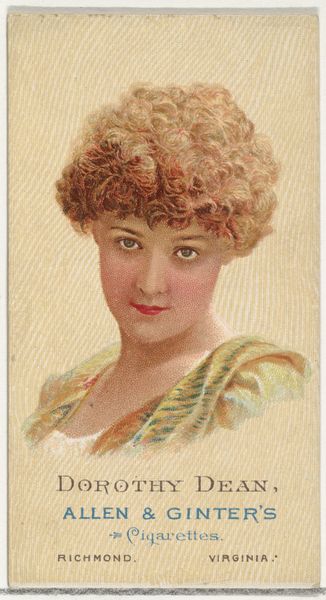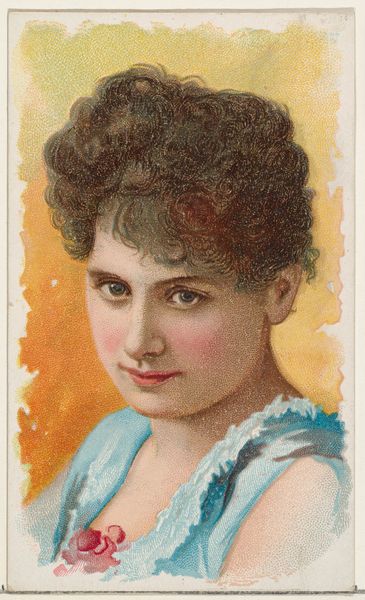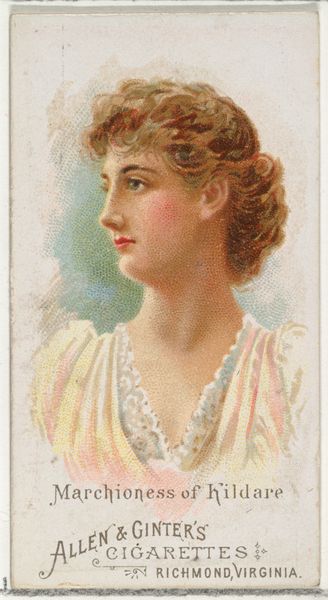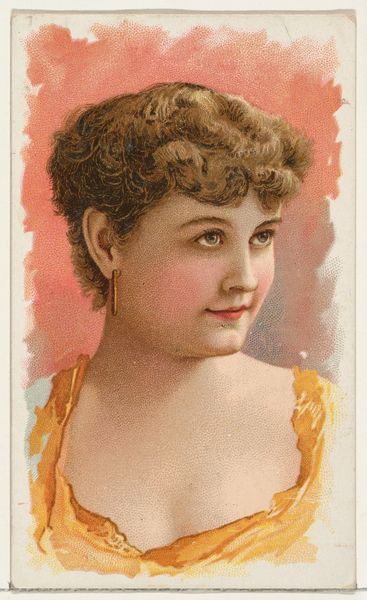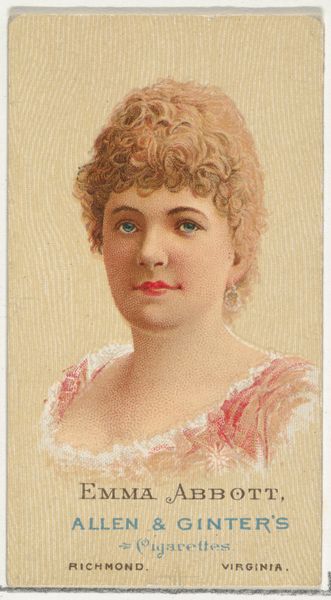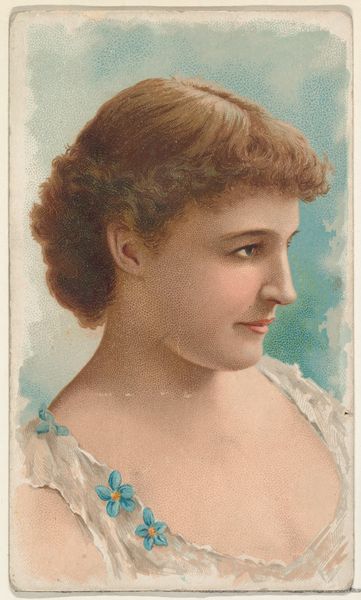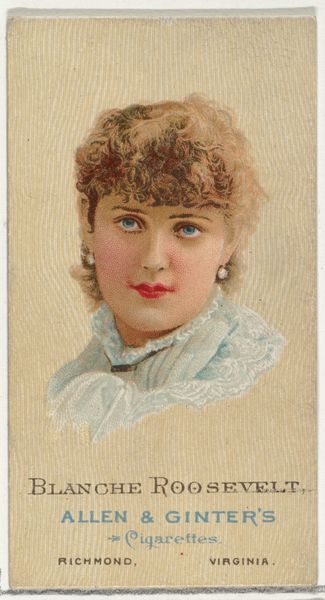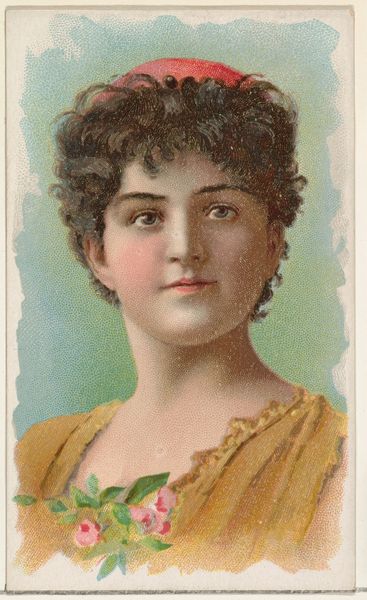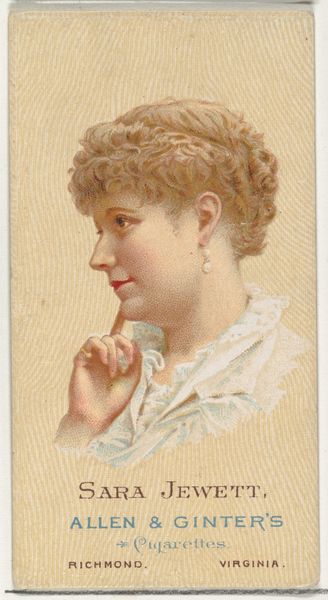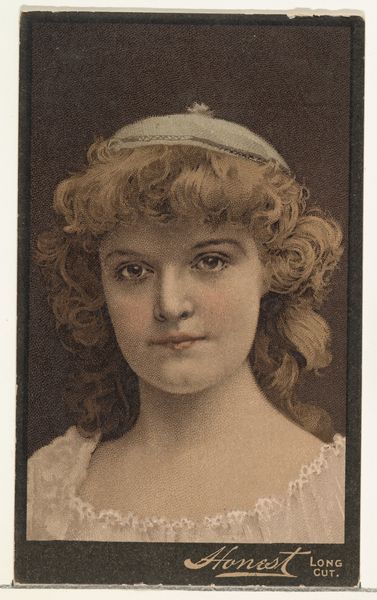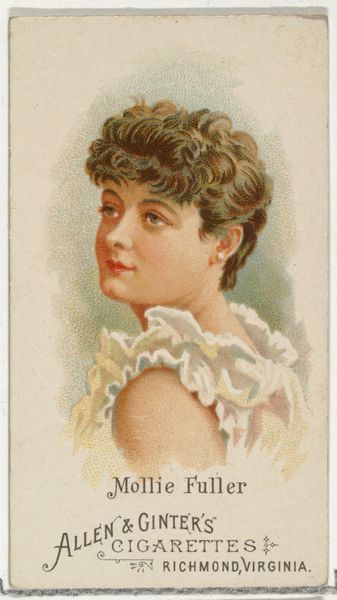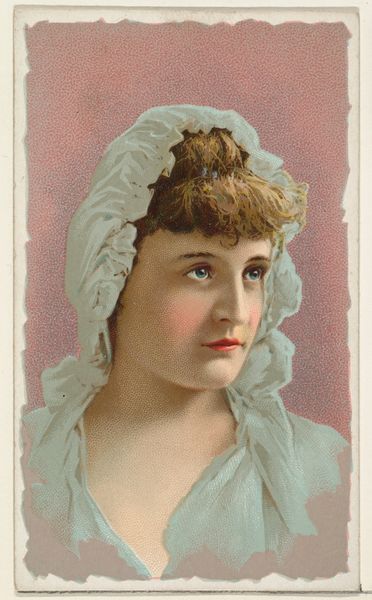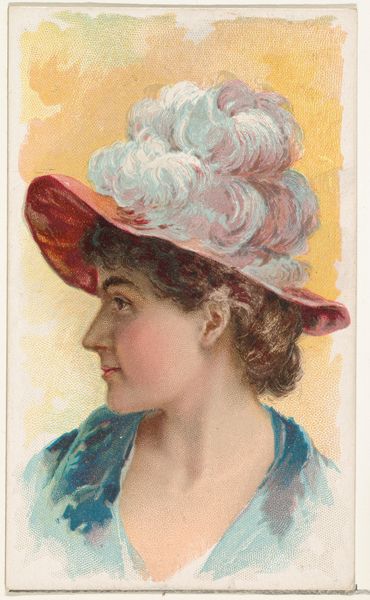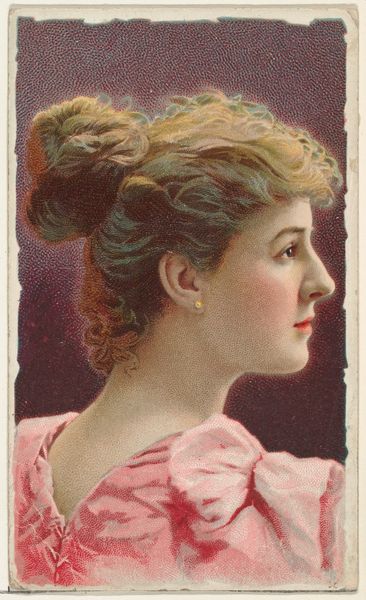
Barde, from World's Beauties, Series 2 (N27) for Allen & Ginter Cigarettes 1888
0:00
0:00
Dimensions: Sheet: 2 3/4 x 1 1/2 in. (7 x 3.8 cm)
Copyright: Public Domain
Curator: Let’s turn our attention to this striking portrait. "Barde, from World's Beauties, Series 2," was created in 1888 as a lithograph and watercolor for Allen & Ginter Cigarettes. Editor: Immediately, the smooth, almost porcelain texture of her skin is what strikes me. It's idealized, definitely, but also feels carefully rendered given the scale. It's quite lovely in an eerie way, knowing it came from a cigarette card. Curator: Indeed. These cards were essentially miniature advertisements included in cigarette packs, targeting a consumer culture rapidly developing at the time. Allen & Ginter employed innovative printing methods and distributed them widely, creating desirable and collectible images of actresses, athletes, and "World's Beauties." The use of "World's Beauties" implies an act of classification and objectification, don't you think? Editor: Absolutely. It speaks to the broader cultural narratives around femininity, beauty standards, and the commodification of women during this period. The company’s headquarters were based in Richmond, Virginia; this particular card’s existence underscores the link between beauty, tobacco consumption, and the economic landscape shaped by a post-Reconstruction American South. Curator: Right. I'm interested in the lithographic process and hand-applied watercolor washes—the materials chosen contributed significantly to its allure. The company produced a vast quantity of these cards; consider the labour and processes involved in making images available on such a broad, and often discarded, scale. It blurs those distinctions of high art versus design and consumer production, challenging conventional narratives around the production of art. Editor: Also, this image echoes Ukiyo-e traditions with the subtle textural background and emphasis on portraiture. Its presence in a mass-produced commercial context says much about the consumption of culture across societal strata, particularly how images informed people’s perceptions of the world. Curator: I find myself pondering the layers of production, from the artists involved in crafting the image, to the factory workers involved in printing the cigarette cards. Editor: Seeing "Barde" within the historical context makes you reflect on issues of representation, consumption, and the intersecting dialogues it encourages.
Comments
No comments
Be the first to comment and join the conversation on the ultimate creative platform.
